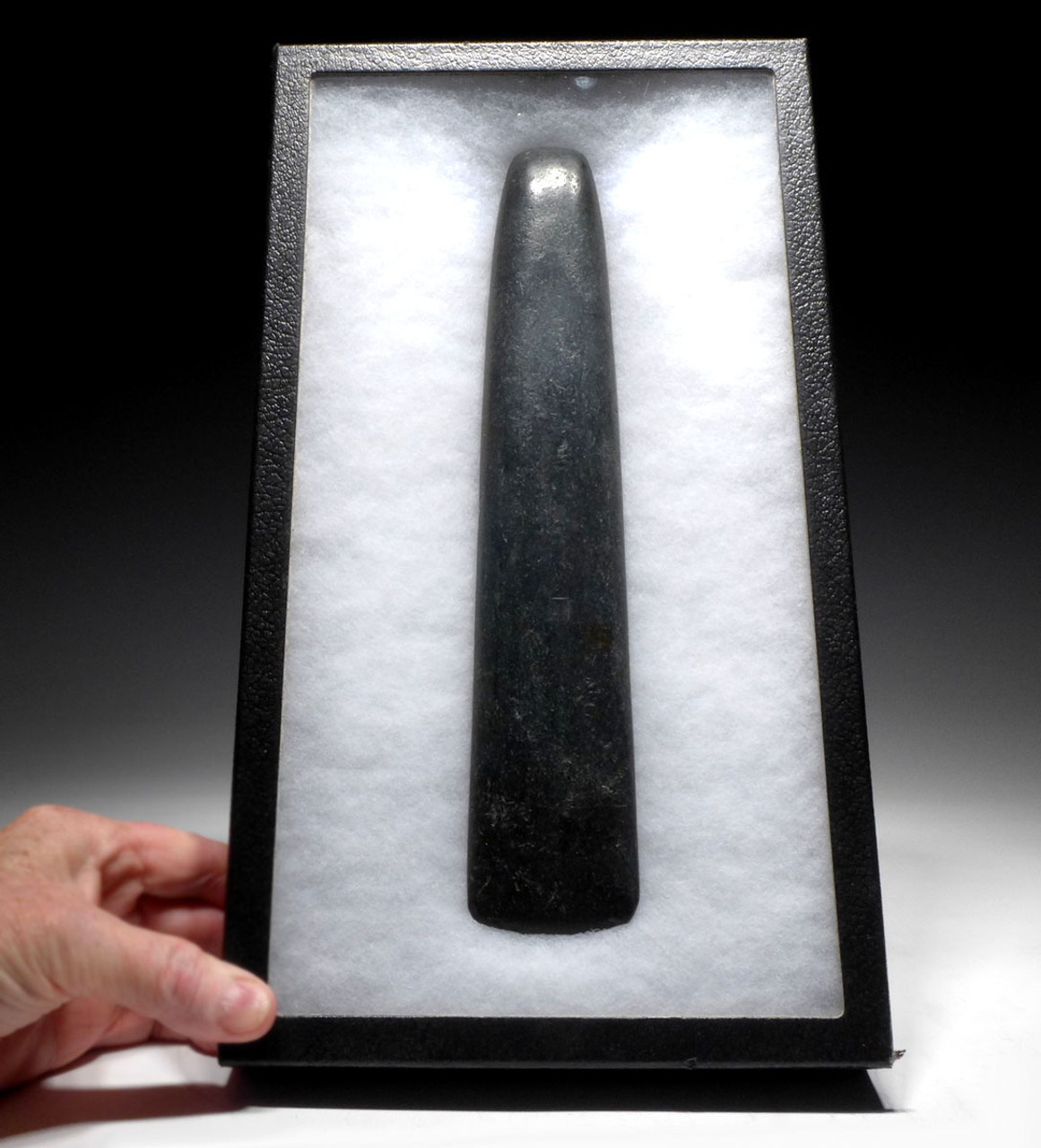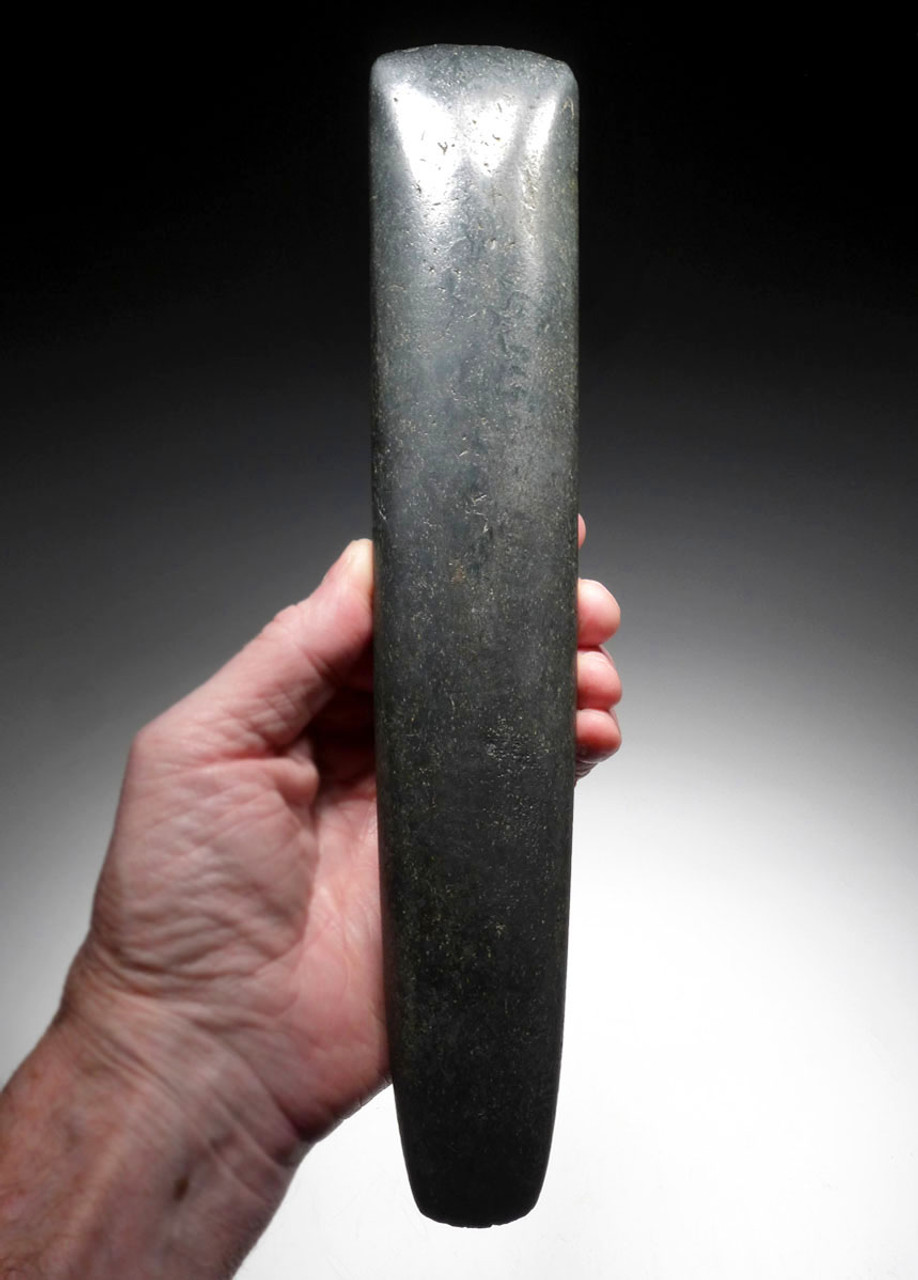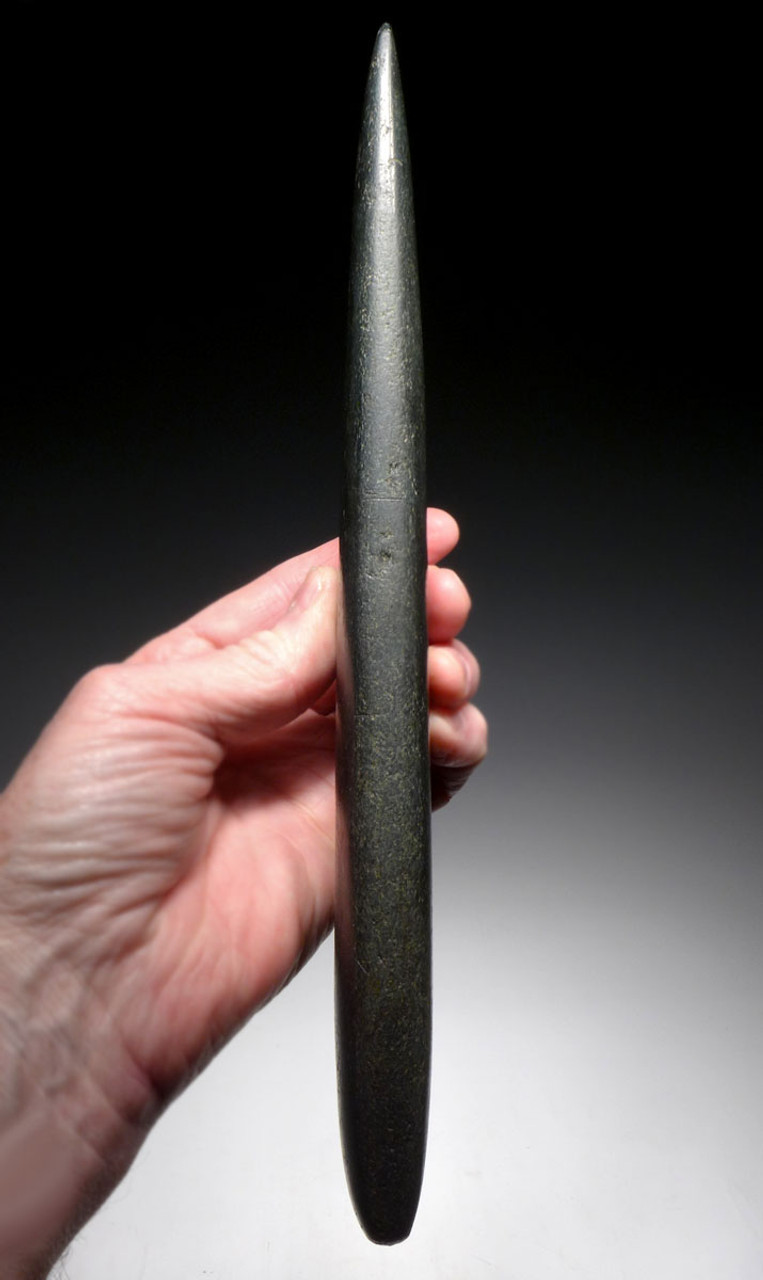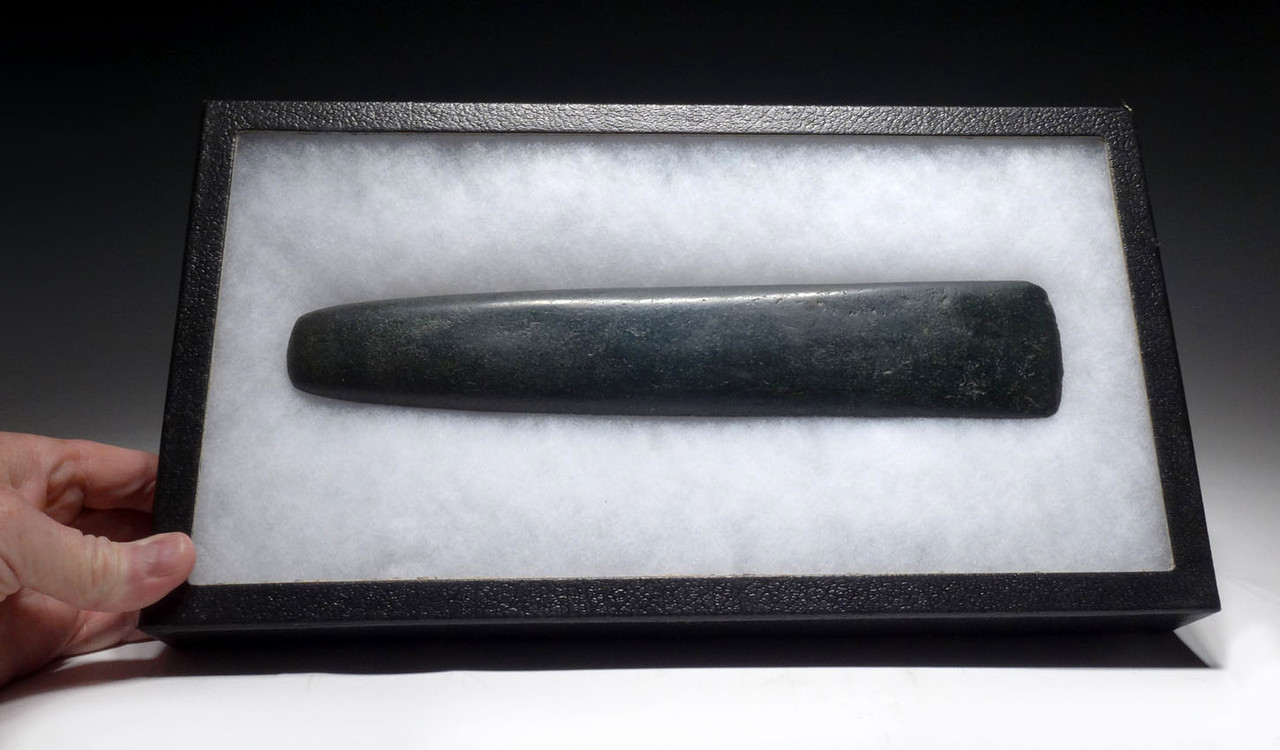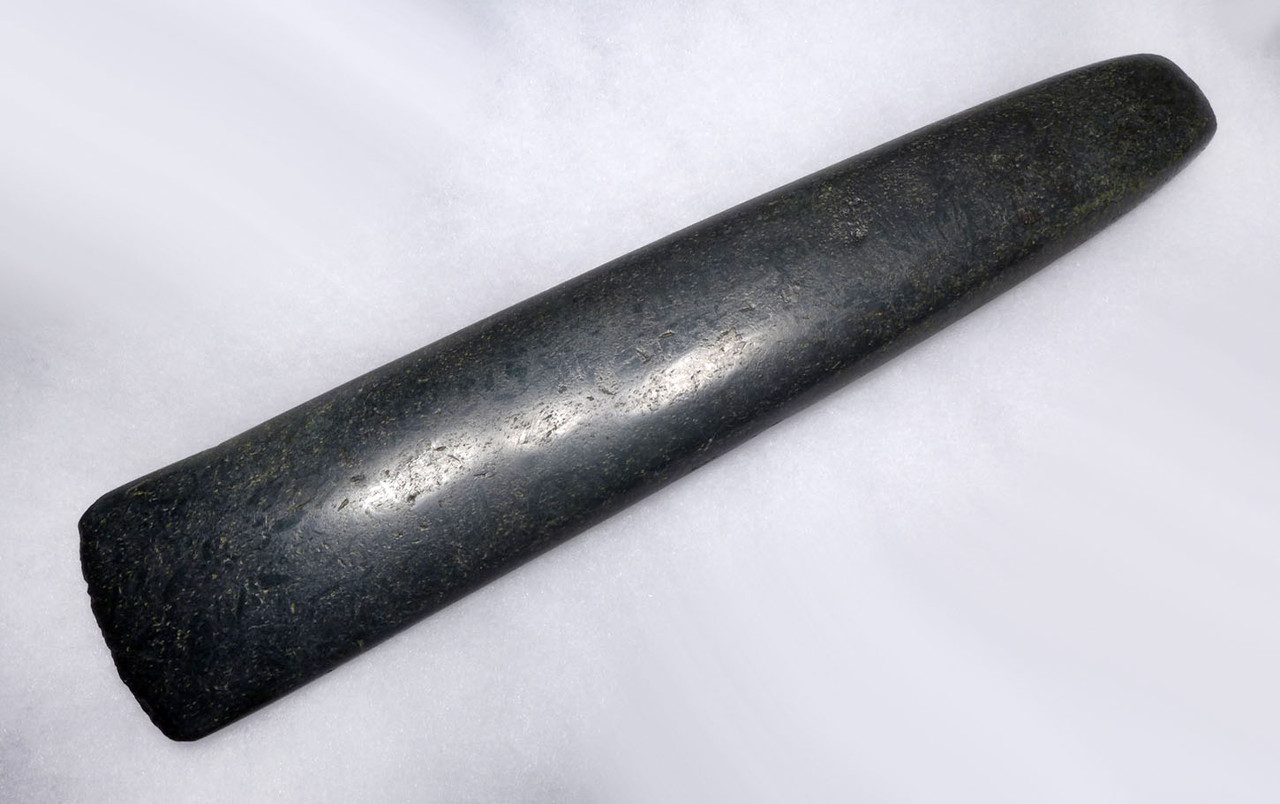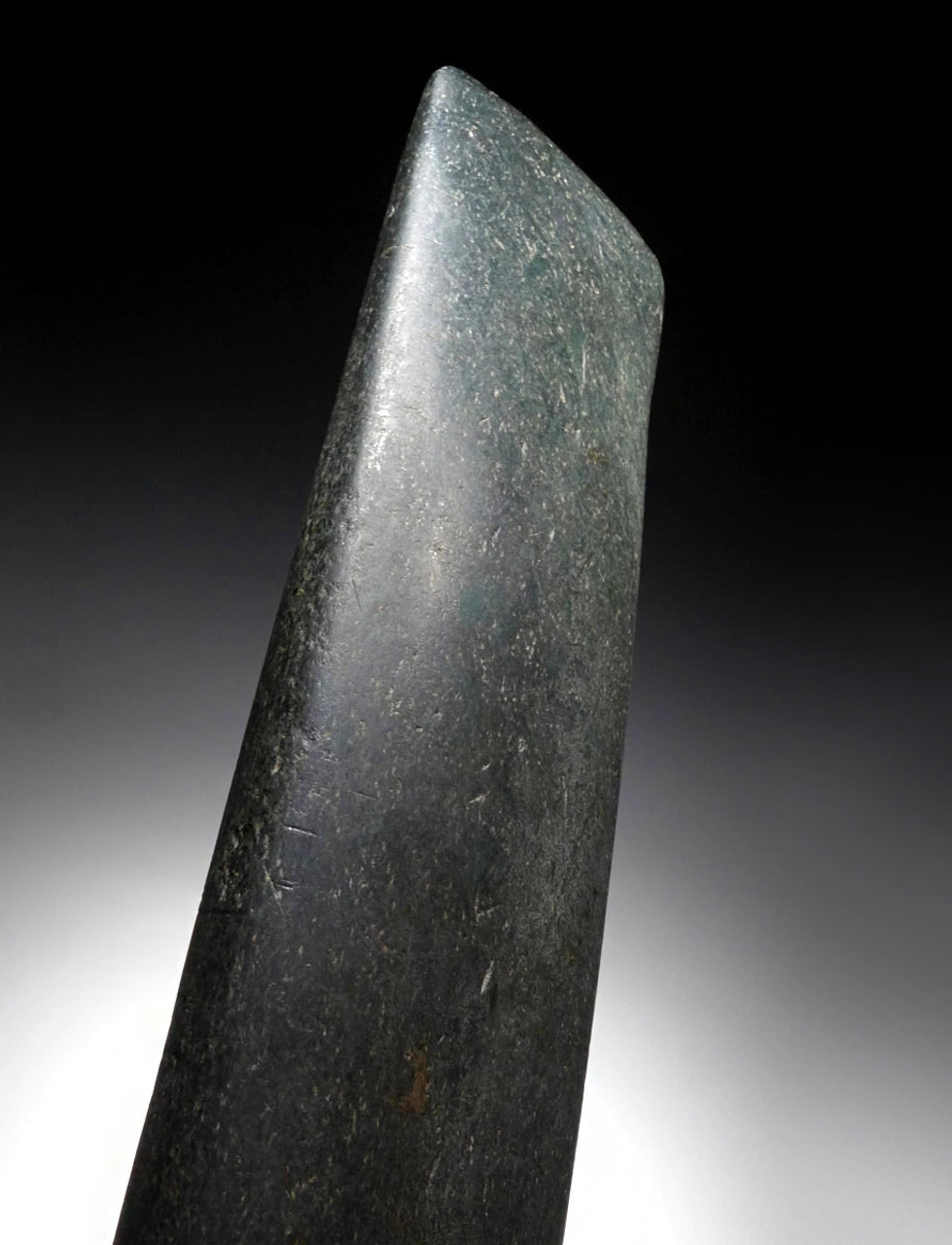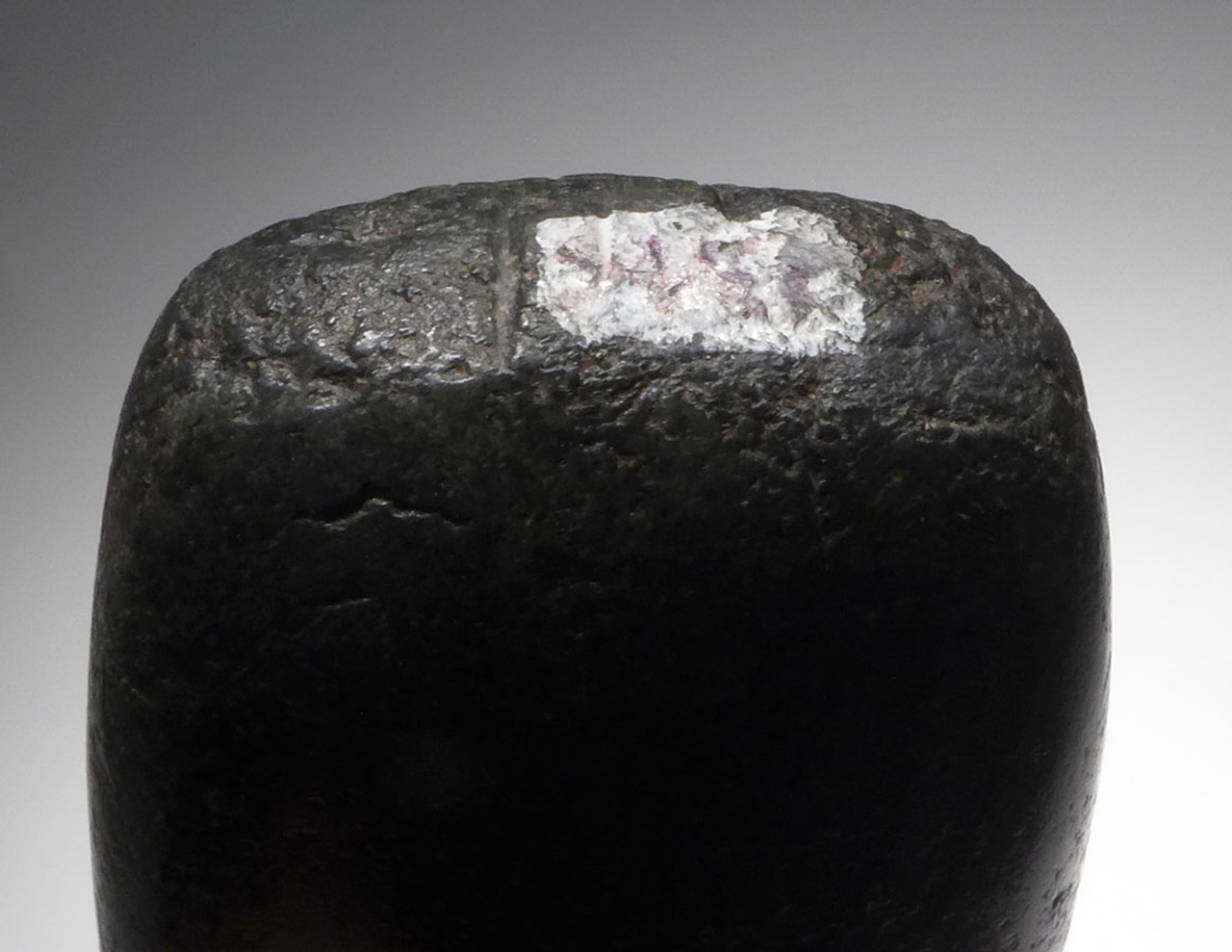Product Description
SEE MORE PRE-COLUMBIAN ARTIFACTS
Because it was the "first" Pre-Columbian culture of the region and venerated by, as well as influenced so many later Pre-Columbian civilizations, objects from the Olmec enigmatic civilization are highly prized amongst seasoned collectors. The sudden appearance of this highly developed culture which produced the mysterious colossal stone heads, still puzzles scientists with many unanswered questions. Where they came from and where they disappeared to remains a mystery today. They were a legendary people even in ancient times and were revered by many Pre-Columbian cultures that followed them. Their artifacts are in strong demand today just as much as they were by the ancient Mayan and Aztec people who often would dig up older Olmec objects and re-bury them in their temples.
This INCREDIBLE and enormous blue-green jade celt adze axe comes from the Olmec Pre-Columbian Indian Empire. In the Formative period, the Olmec of the Gulf Coast were among the first Mesoamerican people to shape jade into votive celts, axes, and bloodletting tools around 1200-1000 BC. An axe this size and of jade indicates it would have both prestige and religious, ceremonial purpose. This massive specimen is perfect in form and preservation. The impressive length is enhanced by its incredible workmanship and graceful thin profile when viewed from the edge. The exceptional polish shows off fine detail on the surface that reveals the jade's magical property - its fibrous structure that made it so tough and strong when used in the fabrication of weapons like this. This is one of the most impressive, large and well-made jade Mayan celt axes we have ever seen. The effort and workmanship to produce an axe like this would have been extremely time-consuming. The polish and smooth surface on this piece is magnificent with a fine, sharp intact cutting edge, and unbroken butt end. Original ancient mineral deposits in microscopic crevices attests to the authenticity and age of this rare Mayan weapon.
The use of jade in Mesoamerica, for symbolic and ideological ritual, was highly influenced by its rarity and value among Pre-Columbian Mesoamerican cultures, such as the Olmec, the Maya, and the various groups in the Valley of Mexico. The extreme durability of jade makes fine grained or fibrous jadeite and nephrite highly useful for Mesoamerican technology. It was often worked or carved as ornamental stones, or shaped into figurines, weapons, and other objects.
Jade was the most precious material to the Olmec - more precious than gold. Many other Pre-Columbian cultures after the Olmec revered and treasured jade, using it in the most sacred applications such as prestigious jewelry, burial masks and even burial armor suits. Jade also had a valuable application in weapons due to its toughness
HISTORY
The Olmec are best known for the enormous helmeted heads they left behind, each carved from of a single massive rock boulder. There is no known Pre-Columbian text that describes or mentions the reason or presence of these megalithic art structures and they have been the subject of much speculation. Some have theorized they were ballplayers but current belief is that they are portraits of rulers. Some have even described the heads as being effigies of ancient astronauts from another galaxy. How they were made or transported by such an early civilization, remains a complete mystery. The heads are all unique in their facial features but all have distinct, common elements in the helmet styles. The Olmecs can be considered the "mother culture" for all subsequent Pre-Columbian cultures of Mesoamerica.
In addition to their influence as the first civilization in Mesoamerica, the Olmecs are credited, or speculatively credited, with many "firsts", including the practice of bloodletting (and perhaps human sacrifice), writing and epigraphy. They are also credited with the invention of the concept of 'zero' and the Mesoamerican calendar, as well as the Mesoamerican ballgame and even perhaps, the compass.
The Olmec culture was first defined as an art style, and this continues to be the hallmark of the culture. Handworks were made in a variety of media such as jade, clay, basalt, and greenstone, for example. Many examples of Olmec art are surprisingly naturalistic. Other art expresses fantastic anthropomorphic creatures, often highly stylized, using an iconography reflective of a religious meaning. Their grasp of human anatomy and emotion is unrivaled by any other Pre-Columbian culture of Mesoamerica.
 US DOLLAR
US DOLLAR
 EURO
EURO
 AUSTRALIAN DOLLAR
AUSTRALIAN DOLLAR
 CANADIAN DOLLAR
CANADIAN DOLLAR
 POUND STERLING
POUND STERLING


